WHERE TO GROW REDCURRANTS
First let me mention that redcurrants will grow in almost any situation in the UK, from shade, poor soil and onto heavy clay, they really are very strong growing plants. What we describe below are their ideal conditions for fruiting well but definitely do not be put off growing them if your site doesn’t match these criteria exactly.
The best soil is an open, free-draining one which can retain moisture. The one point to look out for with redcurrants is that they like lots of moisture so if your soil is light and sandy then digging in some well-rotted compost will do them a world of good. Tolerant of slightly acid or neutral soils their deal would be a neutral soil with a pH in the range of 6 to 7. As far as sun is concerned they prefer a site in full sun in the UK. However they will also produce fruits in partial shade, it may just take a week or two longer to ripen
WHERE TO BUY REDCURRANT BUSHES IN THE UK
Many garden centres will sell redcurrant bushes so there is no difficulty in obtaining them. They are also widely available online.
Our recommendation for a reputable online supplier with a five year guarantee would be Crocus. They have served us well and supply healthy, good sized plants which are extremely well packaged. Click here for their page on redcurrant bushes as bare-rooted and potted plants with a five year guarantee.
WHEN AND HOW TO PLANT REDCURRANTS
Potted redcurrant plants can be planted at any time of the year as described below however they will need frequent watering in the first summer until their roots are well-established. They can be kept in the pot for several weeks (if regularly watered) before planting but are best planted as soon as possible.
Bare-rooted redcurrant plants should be planted as soon after delivery as possible. If this is not possible they can be heeled in to a spare patch of soil and left for a week or so before planting. Heeling in involves digging over a small patch of ground, digging out a small hole and then placing the roots of the plant in it. Cover them lightly with some of the dug soil. The plants can be on their sides or upright whichever is most convenient. Keep the soil moist to allow moisture to be taken up by the roots.
Bare-rooted plants will be available online and from garden centres during their dormant season, mid December to March and that’s when they should be planted. On the day of planting, choose a day when the soil is not frozen or water logged, soak the roots in a bucket of water.
An average redcurrant plant will need to be spaced about 120cm / 4ft from other plants in order to allow it to expand to its full size at maturity.
Opinions differ as to how deep to plant red currant bushes. Our experience is that that they are best planted 5cm / 2in deeper than they are in the pot. This encourages more than one central stem to grow and seems to result in a more healthy bush.
Planting is simply digging a hole slightly larger than the root spread, placing the plant in the hole and in-filling with earth. A good dose (one or two handfuls) of blood, fish and bone worked into the top soil at planting time will provide all the nutrients the plant will need. Water the plant if the soil is at all dry.
REDCURRANT BUSHES IN CONTAINERS
It is easy to grow redcurrant bushes in containers and pots if you bear a couple of factors in mind. First, these are moisture hungry plants which will need frequent watering in warm, dry weather. To help with this we strongly recommend that the top of the soil is mulched with stones, bark, wood chip or some similar material. This really will make a difference by retaining water in the soil at the roots.
Pot size is crucial if you want to grow redcurrants in containers. All currants are relatively shallow rooting plants and a pot depth of 40cm / 17in will be sufficient. More important is the width of the container, a minimum 60cm / 2ft wide is recommended. The larger the pot the less often it will require water – better for your plant and also for you!
Finally pruning red currants in pots should stick by the basic rules (see the section below) but at the same time should be reasonably severe. Keeping the top part of the plant within bounds will reduce the work the roots need to do.
CARING FOR AND PRUNING REDCURRANTS
Redcurrants really are a very easy plant to look after. Just make sure the area around them is free from weeds and grass and that the plants are well watered in dry periods. Lots of water applied occasionally is far better than a little water applied often. A feed with two good handfuls of blood, fish and bone worked into the top soil during March and again in October will feed them well on most soils but if yours is light and / or nutrient deficient feed a little more frequently.
Any mulch applied around the base of the plant (but not touching it) will help greatly in discouraging weeds, retaining moisture in the soil and eventually rotting down and improving the soil texture. If you don’t have well-rotted compost grass clippings will do the job just as well.
Pruning is the main care task for redcurrants but even this is very simple. This is a once a year task which should be done during December to early March when the plant is dormant. To understand how to prune a red currant bush it helps to know that it produces lots of fruit on two and three year old stems. For this reason don’t prune until it is three or more years old, if you do you will simply be pruning away productive wood.
After three years and in all subsequent years the aim should be to prune out to ground level all stems which are older then three years old. On a typical established red currant bush there will be one or two of these older main branches.
Leave this year’s branches alone completely. Two year old main stems should have their side shoots pruned back to two buds from the main stem – this will encourage now growth in the coming year which will bear fruit next year. Take a look at the plant and if any stems are drooping down and touching or nearly touching the ground either prune them out completely or shorten them. Finally check round the plant and cut back any weak or damaged stems to healthy wood.
WHEN TO PICK YOUR REDCURRANTS
Normally redcurrants are ready for harvest from late June onwards in the UK although the timing depends on where you live and the variety you are growing. The fruits are produced in clusters and it’s best to harvest them, a cluster at a time, by cutting the clusters off using a pair of scissors. The fruits should be washed and can be kept in the fridge for three days or so.
To freeze redcurrants remove any damaged fruits from the clusters then place portion sized amounts in freezer bags and straight into the freezer. When the fruits are needed take them from the freezer and remove the individual currants by hand or by running them stems through the prongs of a fork.
GROWING REDCURRANTS FROM CUTTINGS
Free redcurrant bushes are easy from cuttings. They require no equipment, just a small spare patch in the garden. The best time for hardwood cuttings in your area is the third week of October
Look for a two year old main stem and then identify a side stem on it which is about 30cm / 12in long and has grown this year. This is the best wood for redcurrant cuttings but any wood grown this year will do just fine. Cut off the stem to be used as a cutting and trim off the end of the cutting just below a bud. Finally cut the end of the stem just above a bud to leave a stem which is 15cm to 20cm / 6in to 8in long. See the picture below.
Choose a well dug area of the garden to plant the cuttings. Use a pencil to make a hole in the soil to a depth of about 10cm to 12cm / 4in to 5in and place the cutting in it. Just over half the cutting should be below soil level. Fill in with soil and firm the soil down around the cutting, water well to settle the soil around the stem of the cutting.
Even an amateur can expect a 75% success rate with redcurrant cuttings. They will have rooted by early summer and will also probably show signs of leaves sprouting. The best time to move the cuttings to their final position is in October when the soil is still warm but moist at the same time.
GROWING REDCURRANTS FROM LAYERING
Layering is another method of growing additional red currants for free. In October look for stems about the thickness of a pencil / knitting needle which can easily be bent down to soil level. Gently bend the stem down to the soil and scrape off a small part of the bark opposite a bud where the stem touches the soil. Peg the stem down just below the soil surface and cover with an 2cm or so of crumbly soil.
When you come to examine the layered stem in March the next year it will have sprouted roots where it was pegged down. Cut the stem away from the main plant and leave it to root further. It can be moved to its final position in October.
RECOMMENDED REDCURRANT VARIETIES
There seems to be little difference between the taste of most redcurrants which can be bought in the UK but there are significant differences in when they produce fruit, how much they produce and the overall size of the bushes. If you are interested in buying a redcurrant bush see this paragraph above.
ROVADA REDCURRANT
KEY ATTRIBUTES
- Produces fruit late in the season, July to early August
- Height and spread at maturity 1.2m 4ft
- Good disease resistance
- The top growing commercial red currant, good keeping qualities
- Berries are easy to pick being on longer than normal strings
RONDOM REDCURRANT
KEY ATTRIBUTES
- Produces fruit in mid-season, late June to early July
- Height and spread at maturity 1.2m 4ft
- Bumper crop of fruit
- The top growing commercial red currant, good keeping qualities
STANZA REDCURRANT
KEY ATTRIBUTES
- Produces fruit in mid-season, late June to early July
- Height and spread at maturity 1.2m 4ft, a compact grower also good for containers
- Heavy crops
- Good disease resistance
- Received an AGM from the RHS in 1993, reconfirmed in 2013
JUNIFER REDCURRANT
KEY ATTRIBUTES
- Early cropper, mid to late June
- Height and spread at maturity 1.2m 4ft
- Reliable and heavy crops
- Good disease resistance
- Newly introduced modern variety
JONKHEER VAN TETS REDCURRANT
KEY ATTRIBUTES
- Produces fruit early in the season, early to mid June
- Height and spread at maturity 1.6m 5ft
- Good crops
- Good disease resistance especially to foliar problems.
- One of the earliest varieties, awarded an RHS Award of Garden Merit in 1993 and reconfirmed in 2013
RED LAKE REDCURRANT
KEY ATTRIBUTES
- Produces fruit in mid-season, late June to early July
- Height and spread at maturity 1.2m 4ft
- Good crops
- Good disease resistance
- Received an AGM from the RHS in 1993, reconfirmed in 2013
If we were pushed to chose two varieties from the above list it would be ROVADA and JUNIFER. Both top quality plants which spread the production of fruit from early to mid-season.
PESTS AND DISEASES OF REDCURRANTS
The main pest of redcurrants is the gooseberry sawfly. The first sign of damage will be leaves eaten by caterpillars. If you see either of these signs take action immediately. For more details on the gooseberry sawfly click here.
APHIDS
These are small insects (commonly greenfly and blackfly) which suck the liquid out of tender new shoots. This weakens the redcurrant bush. The aphids also create a sticky liquid which cover the leaves and attracts other insects and diseases. They rarely kill redcurrant bushes but can seriously reduce the amount of fruit produced. See our detailed article on identifying and dealing with aphids here. A close-up picture of an aphid attack on a leaf can be seen below, click it to enlarge and see the full horror!
One particular aphid can cause red blisters on the surface of all the currant bushes. It’s called the Currant Blister Aphid (Cryptomyzus ribis), see the picture below. This particular aphid tend to restrict itself only a few leaves and although the effect on those leaves is dramatic it rarely affects the health of the plants. We simply ignore them. If you want treat it then do as described for aphids above.
Currant Blister Aphid
Aphids, including the Currant Blister Aphid, are first seen on currant bushes from late April to mid may depending on the climate in your area. If you do intend to spray them do it at the very first sign of damage for maximum effect.
BIRDS
The red currant fruits are very attractive to birds and they love to eat them. Netting or fruit cages are the only way to prevent the unwanted attention of birds.
COMMENTS / QUESTIONS LEFT BY OUR READERS
| Date: 28 March 2018 | From: Lyn |
| QUESTION: How to train new red current bush to cordon. I have 2 – one with 3 stems the second with 5. I suspect I need to trim 2 stems from the latter. Which stems should I cut, and how should I cut them? Incidentally I have posts up @ and will wire up with 3 bamboo canes for each to tie in as support.
ANSWER: I haven’t tried this so I give two links below from websites which have: |
|
| Date: 10 July 2017 | From: Frances K |
| QUESTION: My redcurrant had loads of fruit last year, but this year has none! The bush looks very healthy, no visible disease or pests. I didn’t prune it, though.
ANSWER: I doubt that lack of pruning for one year would dramatically effect fruit production. The berries are produced on older stems although fruit production will decrease gradually if older wood is not pruned out. My bet would be that birds have eaten them. They can demolish a whole crop in a matter of days. Some areas are affected others aren’t, there appears to be no obvious reason. My crop remains untouched this year, but a friend about a mile down the road has lost the entire crop. The only solution is net them or give up and grow white currants instead. |
|
| Date: 18 June 2016 | From: Elisabeth G |
| My red currant bush has yellowing leaves with brown spots. I have lots of red currants which have ripened before the other bushes. Can I eat them? I have cut back the bush and sprayed with soapy water.
ANSWER: I would eat them. It sounds like a pest has caused them stress which often results in the fruit ripening earlier than normal. |
|
| Date: 03 April 2015 | From: Andrea |
| Thank you for information on red currants, I was worried as my bush of 2yrs has never fruited, hopefully this year, the third, I may get fruit? I was ready to give up on it !
ANSWER: The third year sounds about right. If nothing happens this year then you have a problem. |
|
| Date: 18 February 2015 | From: Barbara |
| I have also bought a selection of soft fruit from Aldi at £2.49, worth a try | |
| Date: 8 February 2015 | From: John |
| I live in the North east of England and this year I am planting Jonkheer van Tets™ red currant bought from Aldi this week 3 bare roots for £2.49 I will let you know how it goes
ANSWER: Good luck, please do let us know how it does. |
|
WHY NOT LEAVE YOUR QUESTION / COMMENTS ABOUT THIS PAGE?
ENTER THEM BELOW. EMAIL ADDRESS IS OPTIONAL.
YOUR COMMENTS WILL BE ADDED ABOVE WITHIN A FEW HOURS.
[contact-form-7 id=”1882″ title=”Contact form 1″]
END OF ARTICLE
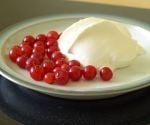
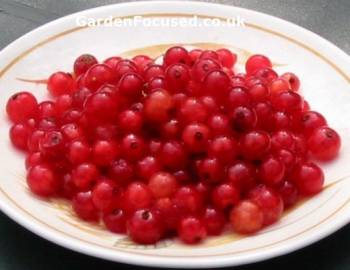
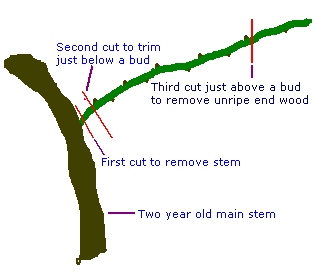
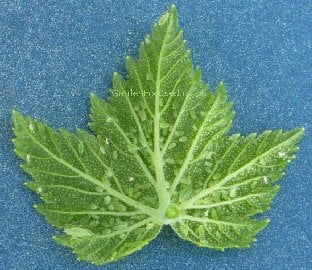
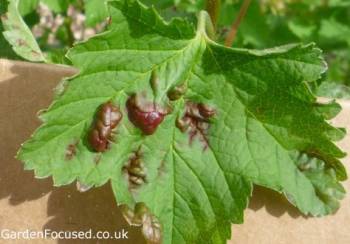
PLANT, GROW & PRUNE REDCURRANTS
By David Marks
This is one of our shorter articles on growing fruit and the reason is simple, redcurrants require very little attention and can grow a large crop in a huge variety of positions and soil types. Neither are they particularly fussy about growing in full sun or shade in the UK.Along with gooseberries and blackcurrants, redcurrants produce a crop of berries earlier in the year compared to other fruits, often as early as mid-June and some varieties even fruit as late as mid-August.